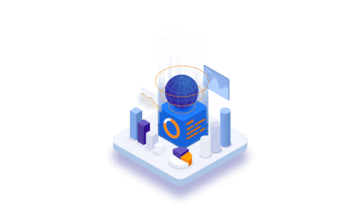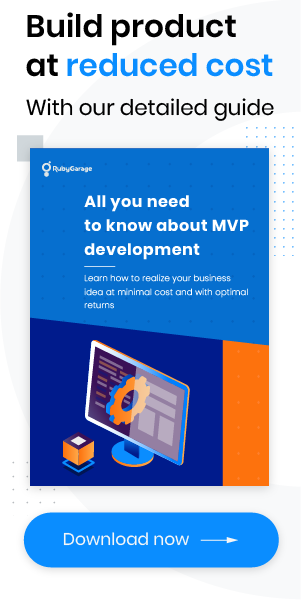-
Product Management
Software Testing
Technology Consulting
-
Multi-Vendor Marketplace
Online StoreCreate an online store with unique design and features at minimal cost using our MarketAge solutionCustom MarketplaceGet a unique, scalable, and cost-effective online marketplace with minimum time to marketTelemedicine SoftwareGet a cost-efficient, HIPAA-compliant telemedicine solution tailored to your facility's requirementsChat AppGet a customizable chat solution to connect users across multiple apps and platformsCustom Booking SystemImprove your business operations and expand to new markets with our appointment booking solutionVideo ConferencingAdjust our video conferencing solution for your business needsFor EnterpriseScale, automate, and improve business processes in your enterprise with our custom software solutionsFor StartupsTurn your startup ideas into viable, value-driven, and commercially successful software solutions -
-
- Case Studies
- Blog
How to Conduct a Feasibility Study and Why is it Important
Starting a new project is an exciting journey. With a great idea and enough effort, any dream can come true. Can’t it?
Rushing into action with a perfect picture in their heads, creators risk failing and losing their enthusiasm. In reality, a vision is not enough. A witty strategist must conduct a feasibility study to check if the idea can be transformed into a project, attract investments, and make it to the end user.
What is a feasibility study?
Before moving any project forward, startup owners should thoroughly analyze the factors that will have the greatest influence on its success or failure. There are many factors that affect business success, and a feasibility study is an effective tool to predict the outcome of a new project.
A feasibility study is an assessment of a project from the economic, legal, technical, operational, and scheduling points of view. Such a study uses a set of methods to calculate a project’s chances of success. Additionally, it helps creators foresee risks and form an action plan.
Feasibility study for startups: why is it important?
Nine out of ten startups fail to meet their initial goals, and almost half close down within two years. According to CBInsights, startups usually fail for common reasons. There is rarely a single reason why a company fails, which is why the total of the percentages in the graphic below exceeds 100%.

Without an economic feasibility assessment, a project risks failure: 38% of startups run out of investment or cannot generate profit, while 15% face pricing issues. Proper market research could save startups from failure due to lack of market need (35%), a flawed business model (19%), or getting outcompeted (20%).
Other common reasons for failure can also be mitigated if foreseen. For example, 18% of startups fail on account of legal issues, which could easily be predicted by a legal feasibility study. Organizational feasibility shows the risks of hiring the wrong team (14%) and stakeholder conflicts (7%). Poor product development (8%) can be prevented with technical feasibility analysis. A scheduling feasibility study, in turn, can save a startup from releasing a product at the wrong time (10%).
What does a feasibility study give startup creators?
With the help of an in-depth feasibility study, a project’s prospects will become more obvious and objective. This study will let the project’s creators:
Forecast the project’s likelihood to succeed
A feasibility study lets you measure various business parameters and predict the likelihood of your project’s success. The results of a feasibility study will give you precise numbers and the information necessary to decide whether the project is viable.
Save money and time
A feasibility study analyzes possible problems in advance before the actual work begins. The idea can be great, but if it’s realized in the wrong time or place, it will be a waste of resources.
The creators of Pay By Touch, for example, developed a system for biometric payments. It seemed like a great and futuristic idea, but the market wasn’t ready for adopting a whole new infrastructure, so the company had to close down.
Identify new business opportunities
A feasibility study reveals possible alternative directions for the project. For example, market research may disclose a new specific need of the target audience that the product can fulfill. Or it can reveal a new audience with one particular need.
Sometimes, feasibility research can prompt changes to the product. For instance, it can disclose that one feature is far more valuable than others. So the product owners may change focus and transform the product into a different solution in accordance with the demand.
Improve the team’s focus
At the very start of product development, the team faces chaos, and it seems that everybody does everything simultaneously. A feasibility study will define the project’s significant milestones and highlight which actions should be taken right away and which should be added to the backlog.
Convince stakeholders
Stakeholders are interested in returning their investments as much as they’re interested in the project’s value. The more convincing your presentation is, the faster you’ll get a green light from the people who have a stake in your project.
Types of feasibility studies

Technical feasibility
A technical feasibility analysis evaluates the company’s ability to provide specialized equipment, support, and expertise to bring the product to life. There are three factors to be taken into account:
- Project size: It is based on two parameters: the number of team members and the project duration. The more people are involved and the more time the project takes, the bigger its size.
- Project structure: An accurately defined project structure exposes new businesses to fewer risks. All team members should know what role they play, what their objectives are, and how to accomplish tasks.
- Familiarity with technology: All team members involved in the development process should be familiar with the technology. If it’s relatively new, it will take more time to establish a stable development process.
Another vital thing to consider is the scalability of a technology stack. It’s common to choose a simple tech stack at the MVP development stage. Over time, however, this tech stack can become an obstacle to applying new tools and taking your project to the next level. Make sure that your team is ready to scale the technology as the business grows.
Economic feasibility
An economic feasibility analysis shows whether the project will bring profits, cost savings, or any other financial benefits. It consists of several parts:
- Cost analysis: This is a complete analysis of project costs. From hardware to insurance, it should consider all expenses. It’s essential to think of any risks and include their prevention in the total costs at this step.
- Calculating the future value: This part is about justifying economic feasibility by using metrics to quantify a project's future value: Net Present Value (NPV), Internal Rate of Return (IRR), Return on Investment (ROI), Payback Period (PP), and Profitability Index (PI). All of them have proven their efficiency and can describe the project’s opportunities, taking different parameters into account.
- Break-even analysis: This analysis identifies at what point in time the project’s benefits will be equal to its costs. In other words, it calculates the date when your project will start bringing in profit.
Legal feasibility
Legal feasibility must include the project’s compliance with all legal requirements. Before the project starts, consider compliance with requirements both locally and in your target markets.
You should develop your project in compliance with any laws, regulations, standards, or other guidelines within your specific industry. For example, any healthcare or medicine-related product must comply with HIPAA in the United States. Likewise, any projects that will process the personal data of EU residents must take the GDPR into account. Make sure to study all industry-related requirements. If you have to make changes after your product is developed, it will require even more time and money to comply with requirements.
Operational feasibility
Operational feasibility shows how the project covers the needs of an organization and meets its business goals. The project must take advantage of business opportunities and serve the company. For example, any Meta Corporation product like Instagram, Portal, or Nova has to contribute to the business goals of its parent company.
Also, an operational feasibility study helps define the workflow right at the planning stage. Estimate and define all processes and communications, including cooperation with outsourcers and any other third-party providers. Seeing the full picture, you may detect faults in the workflow and find the best solution to decrease the development time.
Scheduling feasibility
Scheduling feasibility stems from operational feasibility. When you clearly understand what you’re doing and how you’re doing it, it will be much easier to know when you come to a desired point or milestone.
One of the most critical factors in a project’s overall feasibility is how long it will take. Time limits and potential deadlines should fit with business goals. If product development takes too much time, the value of the product diminishes.
Feasibility study: step-by-step instructions
A feasibility study is an in-depth process that takes time and attention to details. Follow these steps to find an appropriate strategy and bring your startup to life.

Step 1: Gather information
Before you start, set a clear product goal and investigate the business environment.
- Justify your idea; imagine the product’s goal and the problems it will solve. Estimate the core value of the project for everyone involved.
- Conduct a market assessment for your particular product type, find lookalike products and analyze their performance, and try to deduce why they have succeeded or failed.
- Find the core value of your product and formulate its competitive advantage.
- Examine the risks you might face and estimate if you’re ready to fight them with your head up high.
Remember that this is not a feasibility study itself but thorough and necessary preparation. Upon completion of this step, the real fun begins.
Step 2: Conduct feasibility studies
Once you’ve tried the waters and got the first impression of your idea, you can start conducting feasibility studies. Basically, this step takes you through all the types of feasibility studies we’ve talked about.
Your project must be feasible from every angle: technical, economic, legal, organizational, and scheduling-wise. Conduct each study carefully. Some assessments are difficult to perform solo, so don’t hesitate to ask professionals to help you with the calculations. If you decide to do that, stay involved in the process and regularly check your consultants’ progress.
Step 3: Research the market
Market research is one of the core components of a feasibility analysis. With the help of traditional marketing research tools like focus groups, customer and expert interviews, surveys, and competitor studies, you can:
- Identify various market opportunities
- Get insights on how your competitors organize their products, services, and marketing actions
- Understand the initial needs of your potential clients
- Analyze the reasons for similar projects’ successes or failures
- Have a more realistic expectation of the results
The more research you conduct, the more precise your data will be. Try combining different methods to get the information you need.
Step 4: Calculate final costs
Before presenting the feasibility study to stakeholders, calculate the financial costs and check the economic feasibility estimate for your project.
- Identify all financial providers, both internal and external
- Calculate the cost of failure — potential monetary losses if the project does not survive within a stated launch period
- Calculate the risks and include them as a potential budget point
- Determine a break-even point according to your economic feasibility study
- Calculate the total project completion cost, including risks
This part is always tricky because a rough estimate quickly turns into concrete numbers. To have more space for maneuvering, calculate all maximum potential costs.
Step 5: Review and present the results
Presenting your findings to stakeholders might make you feel nervous, so make sure you arm yourself with solid arguments:
- Check all of your study’s components.
- Be ready to play verbal ping-pong with facts, not predictions. To do that, you need to know the structure of your study and the major numbers.
- Rehearse your speech and think of potential questions and objections that might come from your audience.
It’s okay to be anxious about your product’s future. Instead of calming yourself down, try to reroute your anxiety to enthusiasm. After all, charisma matters, especially if you believe in your product and have sufficient proof of its success.
Feasibility study mistakes and how to avoid them
Knowing how to do a feasibility study does not guarantee protection from flaws. To make your feasibility study proper and realistic, avoid these mistakes startup owners commonly make.
Rushing into development
To succeed in business, you must learn to curb your enthusiasm and estimate the chances your product will survive in the real world. Analysis and research should come before activity. Otherwise, you’ll end up doing lots in vain.
Doing everything on your own
Assessing your project seems easy. An independent assessment will prevent a visionary from taking what they want for being what’s real. Seeing the planned project from a different angle might even reveal its hidden values or highlight hidden obstacles.
Defining the project too simply
Precision will protect you from blind spots. Narrow down your project definition. Instead of building “a travel app,” define your project as “an app where travelers can buy airplane and train tickets, book a hotel, order a taxi, explore sights, and share their experiences with other users.” This will give your analysts new parameters to measure.
Skipping components of the study
Every product requires a comprehensive investigation of all factors: technical, legal, organizational, scheduling, and economic. If you forgo a legal feasibility study, for example, your team may face problems it’s not ready for. In addition, all plans and budget calculations won’t be as precise as your stakeholders expect them to be. So consider including all these factors in your feasibility report, even if they seem insignificant at first sight.
Starting development AND a feasibility study at the same time
If you start development without prior research, you will inevitably adjust your ongoing workflow to the results of your feasibility studies. Feasibility studies help you detect growth areas and avoid common problems that might not be obvious at the start. Conduct them before rolling up your sleeves to avoid redoing your work.
Hiring the wrong consultants
When choosing a consultant to conduct a feasibility study, it’s easy to hit the first link in the search results and get results you don’t want. Here are potentially harmful service providers who may bring more bad than good:
A big and expensive company
If you’re starting a small project, a feasibility study by a big player may cost you a lot more than you can afford. Expensive and renowned doesn’t always mean effective. You may find a more suitable solution for your budget. Plus, big consulting companies may not be accustomed to the specifics of your industry, so some factors may slip from their focus.
A narrow specialist
An opposite danger is diving too deeply into the industry. A specialist with too narrow a focus may pay too much attention to industry specifics and ignore obvious factors that can affect a project’s feasibility. For example, software development consultants tend to concentrate on technical and economic feasibility but overlook scheduling factors.
A consultant with a 100% “YES” rate
As a startup owner, you should take flattery with a pinch of salt. If a consultant boasts about giving optimistic estimates to every project they’ve worked on, it should raise suspicion. Not all projects are viable. To avoid such a service provider, ask for some cases a provider has turned down to ensure objectivity.
A consultant with unclear pricing
As a rule, the average price of a feasibility study is 1% of a project’s expected budget. Depending on the size of the project, the price may range from $1,000 to $10,000, though it’s rarely higher or lower.
A floating price for a feasibility study can be a sign of an unreliable consultant. Average feasibility study costs should correlate with various parameters, and all of them must be stated at your first meeting. To protect yourself from extra figures in your final invoice, ask for price specifications.
Choosing a reliable specialist to conduct a feasibility study and analysis will ensure your project’s viability will be accurately estimated. It’s easy to get lost in numbers and tons of information, especially if you’re new to the business you’re about to start.
Conclusion
A feasibility study is an effective business tool and a shield from disappointment. Creators often get discouraged by obstacles, especially when they’re not prepared. Taking all possible factors into account, startup leaders can make their projects a reality without fear.
FAQ
-
A feasibility study is a complete assessment that lets project leaders estimate a planned project's chances to succeed.
-
Feasibility study lets startup creators forecast a project’s likelihood to succeed, save money and time, and identify new business opportunities. In addition, it improves team focus and helps convince the stakeholders to invest in this project.
-
Feasibility analysis investigates several factors that can influence project success: technical, economic, legal, operational, and scheduling. Consider a thorough analysis of each point to see the complete picture of the product's capability of survival in the existing market environment.










